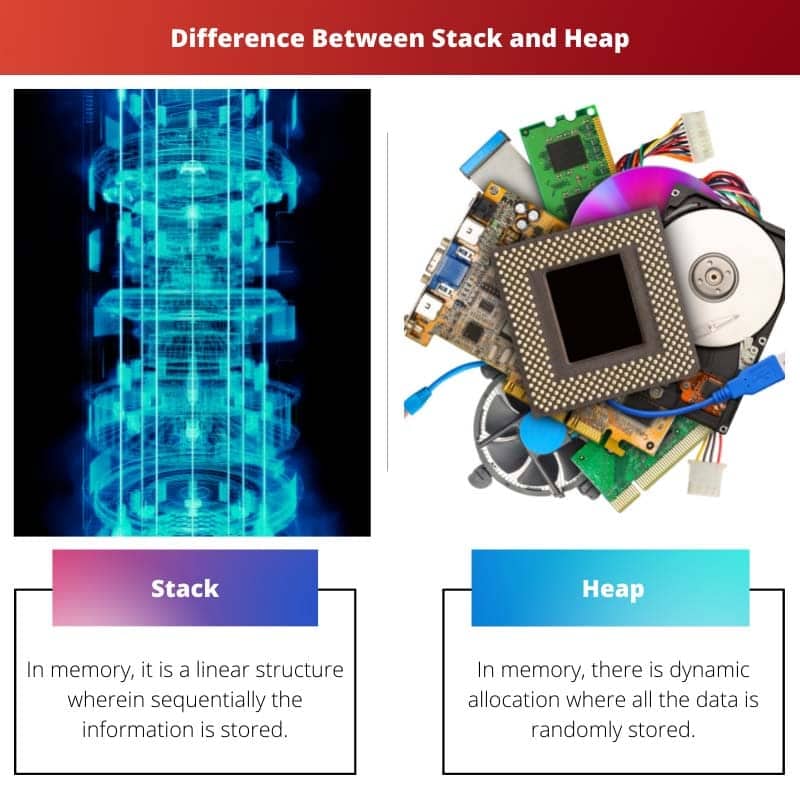Java or Japan Anti-Vivisection Association is a high-level object-oriented used for general purpose and cross-platform programming language.
In Java, memory management is managed automatically. It divides its memory into stack memory and heap memory.
Key Takeaways
- Stack is used for static memory allocation, while Heap is for dynamic memory allocation.
- Stack memory is limited, while Heap memory is not.
- Stack memory is faster to access than Heap memory.
Stack vs Heap
The difference between stack memory and heap memory is that the data structure of the stack is linear, while the data structure of the heap is hierarchical. Allocation of stack memory is in a contiguous block. On the other hand, the allocation of heap memory is in random order. Variables of the stack cannot be resized, whereas variables of the heap can be resized.

The stack memory allocation takes place in the contiguous memory block. Programmers do not worry about memory to allocate stack variables and relocate them.
For global variables, the heap works as a buffer in which programming languages are saved. By default, in heap memory space, all globe variables are stored.
Comparison Table
| Parameters of Comparison | Stack | Heap |
|---|---|---|
| Interpretation | In memory, it is a linear structure wherein sequentially the information is stored. | In memory, there is dynamic allocation where all the data is randomly stored. |
| Memory allocation | In continuous block | In random order |
| Speed | Faster | Slower |
| Data structure | Linear | Nonlinear (hierarchical) |
| Size | Fixed | Possible to resize |
What is Stack?
In contemporary-era computers, every thread has a region of memory that is reserved and called its stack. When the function executes, some of its local state data may add up to the top of the stack.
The stack is beneficial to store variables local to the functions that are currently active. Programmers prefer a stack to store variable-length local data.
Stack memory mechanisms allow the memory of the system to work as temporary data storage and behave like a first-in-last-out buffer.
Some of the advantages of the stack are automatic cleanup of the object, memory cannot be easily corrupted, and a big hand in the allocation and deallocation of memory.
What is Heap?
When programmers execute the instructions, only heap memory is allocated. This kind of memory is called a heap due to its availability of memory space in a pile to allocate and de-allocate.
Heap memory allocation can be divided into:
- Young generation- In this region of memory, all new objects or data allocate the space. In case memory is filled, Garbage collection helps to store the rest of the data.
- Old or tenured generation- In this region, older data objects are stored that are not used or not at all.
- Permanent generation- This region consists of JVM’s metadata for the application methods and runtime classes.
There are several pros or benefits of using heap memory, such as variables that can be accessed globally, no limit on memory size, the method used in the priority queue, and it runs garbage collection.
Main Differences Between Stack and Heap
- Stack memory is helpful in storing function calls and local variables. But heap memory is beneficial to store objects in Java.
- In stacks, stored variables are visible to the owner thread, or in Java, it is a kind of private memory. On the flip side, in heap objects, which are created visible to all threads or among all threads, the heap memory is shared.





